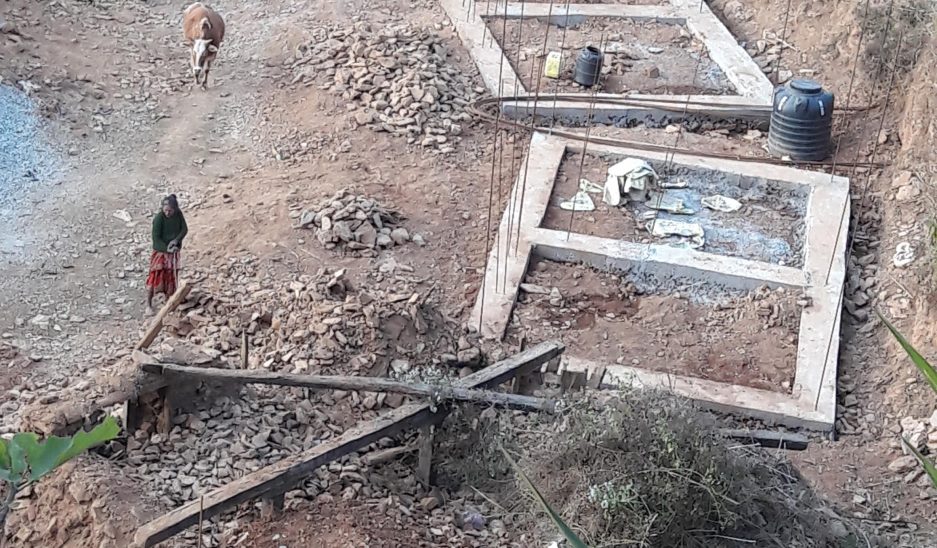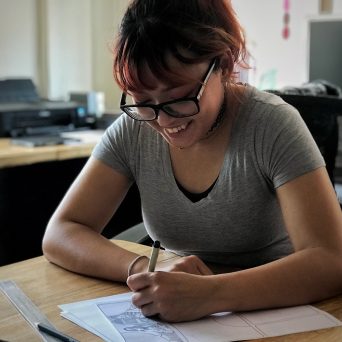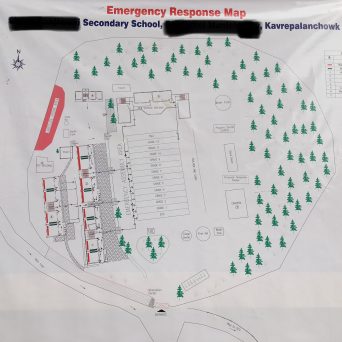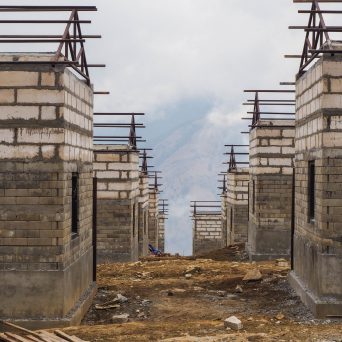
Rebuilding ‘Homes’ or ‘Houses’?, by Jeevan Baniya
During the last two months, I have made multiple visits to some areas of two earthquake affected districts, Nuwakot and Sindhupalchok, where two striking observations led me to write this piece. One was that many villagers had either finished laying the foundations of their houses, or were in the process of doing so. The second was the pattern of building designs adopted for the reconstruction of their houses. These observations reminded me of the ideas of ‘building back better’ and ‘victim-centric reconstruction’.
One of my visits coincided with the deadline of Paush Masanta (the end of the month of Paush according to the Nepali calendar) that had been set for the completion of the foundations of houses if the earthquake affected families (beneficiaries) wanted to receive the rural housing reconstruction grant provided by the government – the deadline was imposed by the government. Apparently, the imposition of the deadline was primarily based on the assumption that the earthquake-affected people would not begin to reconstruct their houses if they were not given deadlines. Whether such a deadline had positive or negative impacts could be contested, but those involved in facilitation and providing assistance to the reconstruction seem to be content with the decision, mainly because the number of house foundations created has significantly increased and the possibility of their completion is also increasing.
But what was also clearly visible was the frustration and difficulties facing these people, due to the shortage of construction materials, skilled and less skilled labour, means of transportation, and sources of water, which have especially dried out at this time of year. One would not disagree with the fact that private business groups, especially those involved in the sector of construction materials and transportation, and contractors, local agents and those institutions who want outputs based on their project performance, were happy, as they could benefit from this progress, while the vast population was put under psychological and economic pressure.
This observation forced me to ask myself some questions, such as: whether and for whom the earthquakes in Nepal created opportunities? Are we really building our communities better than before? Why have the organisations and institutions which were at the forefront of advocating the principles of ‘building back better’, ‘owner-driven reconstruction’, and ‘gender equality and social inclusion’ (GoN 2017), turned their backs when these principles were violated because of the imposition of the deadline, and why did they end up supporting this coercive approach?
Now let me illustrate my second observation, referred to above. I think that it is not only against the principles of victim-centric reconstruction and building back better, but more notably it is likely to have huge ramifications on people’s lives in the long run. As one can see in one of the pictures below, now villages have received an alien creature, the ‘two-room house with or without a corridor’. Perhaps human geographers could better explain this new phenomenon experienced by Nepal’s societies, but I could make some sense of it during my conversations with some of the earthquake affected villagers who had managed to create a foundation or were in the process of founding one. When earthquake affected families think of the new house design and the space that they are set to get, they have increasingly become restless and more nostalgic than ever. They explain how much they have already started missing many cultural and societal values and practices that have been lost due to the adoption of the new design. This made me recall what Oliver-Smith (1996: 304) has argued — that disaster changes ‘social grammar’ and also maybe (my addition) the ‘personal grammar’ of people.
After listening to the families, the immediate question that one can have, as I did, was: “to what extent do they consider the new house as their home?” And if one is interested to know the answer to the question, two simple questions could be helpful, such as: whether they are satisfied with the design they have adopted; and would they choose a different design and materials to build their houses if they had a choice? One might ask why beneficiaries adopted a design that they did not like. Many would state that they did it not by choice but out of compulsion, mainly in order to be able to receive the next instalment of the grant. What was more revealing was that for now they would like to either make that house so that they can use it for storage, or they can get the second instalment but not complete the house.
Unless it is taken into full account that the social and cultural attributes that people consider dear to them are crucial determining factors for building resilience and home, the whole concept of building back better seems useless. And more importantly, one message is very clear: with the earthquake, people not only lost physical structures and space but also emotional attachments. Hence, what they value in the reconstruction is some continuity with the past, and more importantly an emotional attachment as well as physical spaces that could enable them to build the sense of ‘home’ more quickly. In one of the places that I visited, some villagers shared that they have lost spaces for carrying out ritual practices for honouring and commemorating their ancestors, while some were expressing their dislikes about the new house, primarily because they think that the space in the new house is not enough for storage of goods and foods, accommodating guests, etc. It might be too early to comprehend to what extent people will relate to the new community and houses as their home, and this will become more evident after people move in to the houses.
Back in Kathmandu, there seems to be increasing realization, even among the technicians and engineers, that social and cultural aspects are very important, at least to encourage and motivate people to start reconstructing their houses. As one engineer stated in a presentation, ‘we have also realized that it is more than 70% social factors that can facilitate or hinder the reconstruction processes. Unfortunately, these issues have been grossly overlooked by the stakeholders involved in this process.’ The consequences (some might even like to call them ‘uncertain harms’) of the process remain to be realized in the coming years, and unfortunately there is no clarity about anyone being accountable for any potential adverse impacts on the lives of villages and communities.
References
Government of Nepal, National Reconstruction Authority 2017. Nepal’s Earthquake: Post Disaster Recovery Framework 2016-2020. GoN, NRA.
Oliver-Smith, Anthony 1996. ‘Anthropological research on hazards and disasters’ Annual
Review of Anthropology 25: 303-28.





